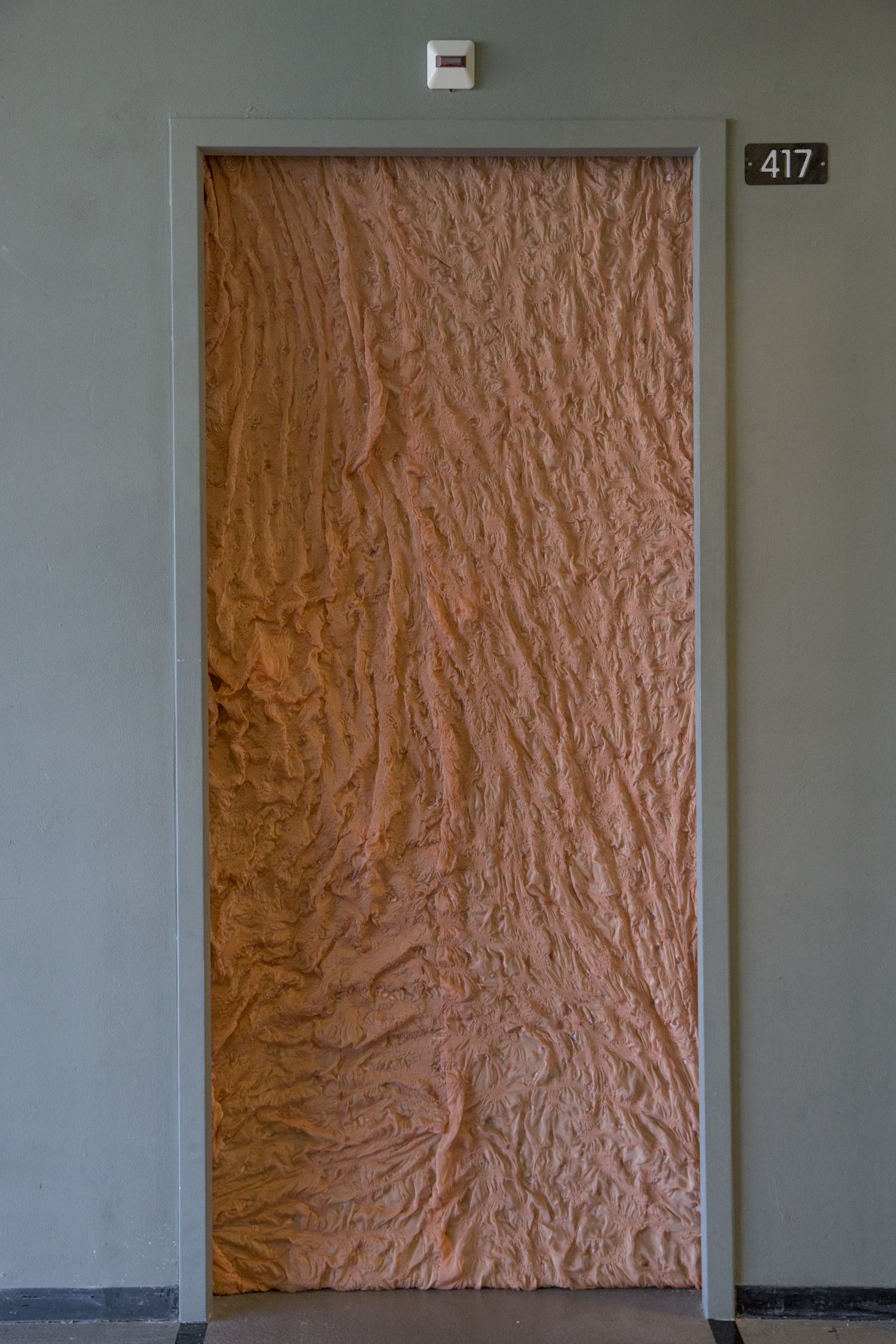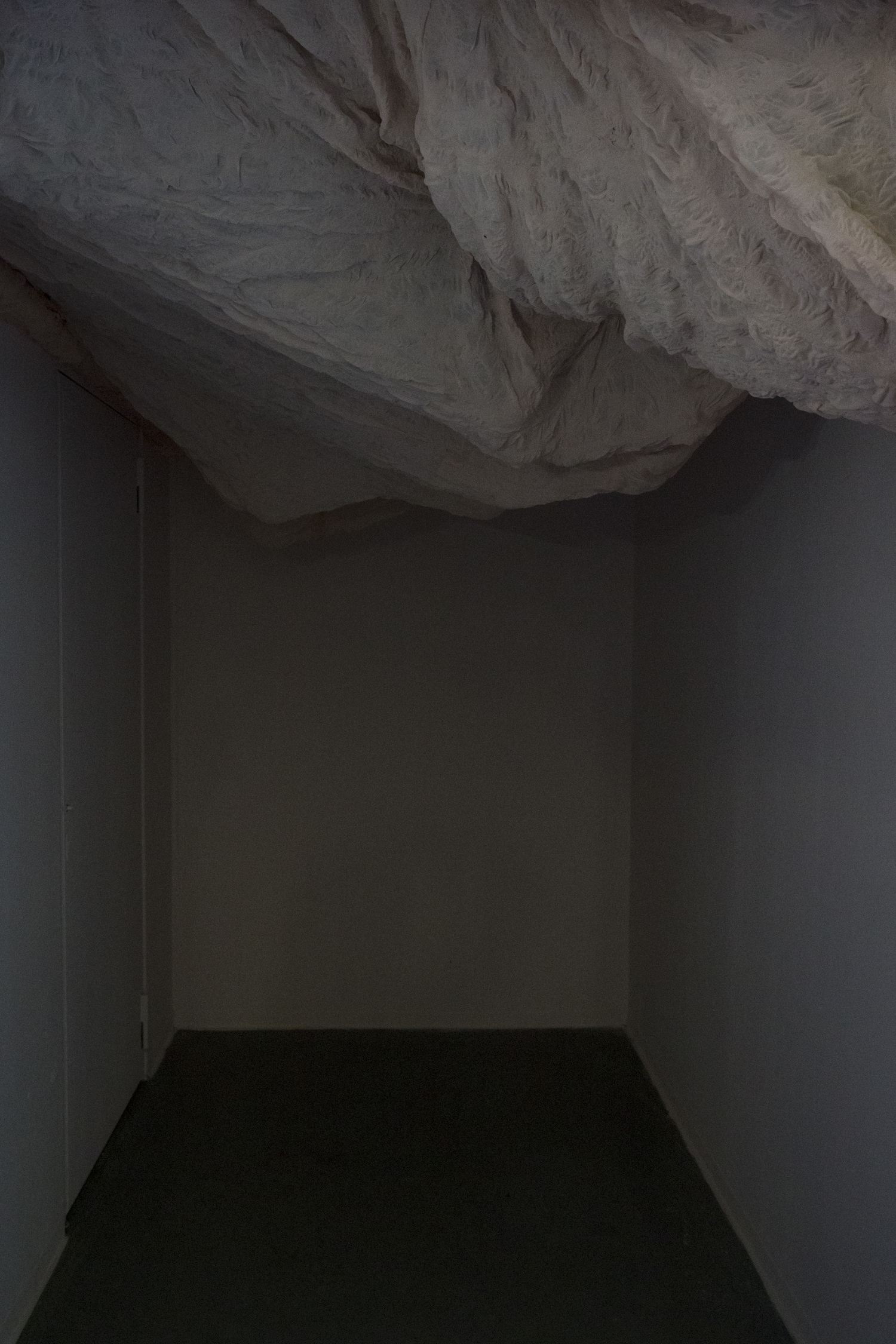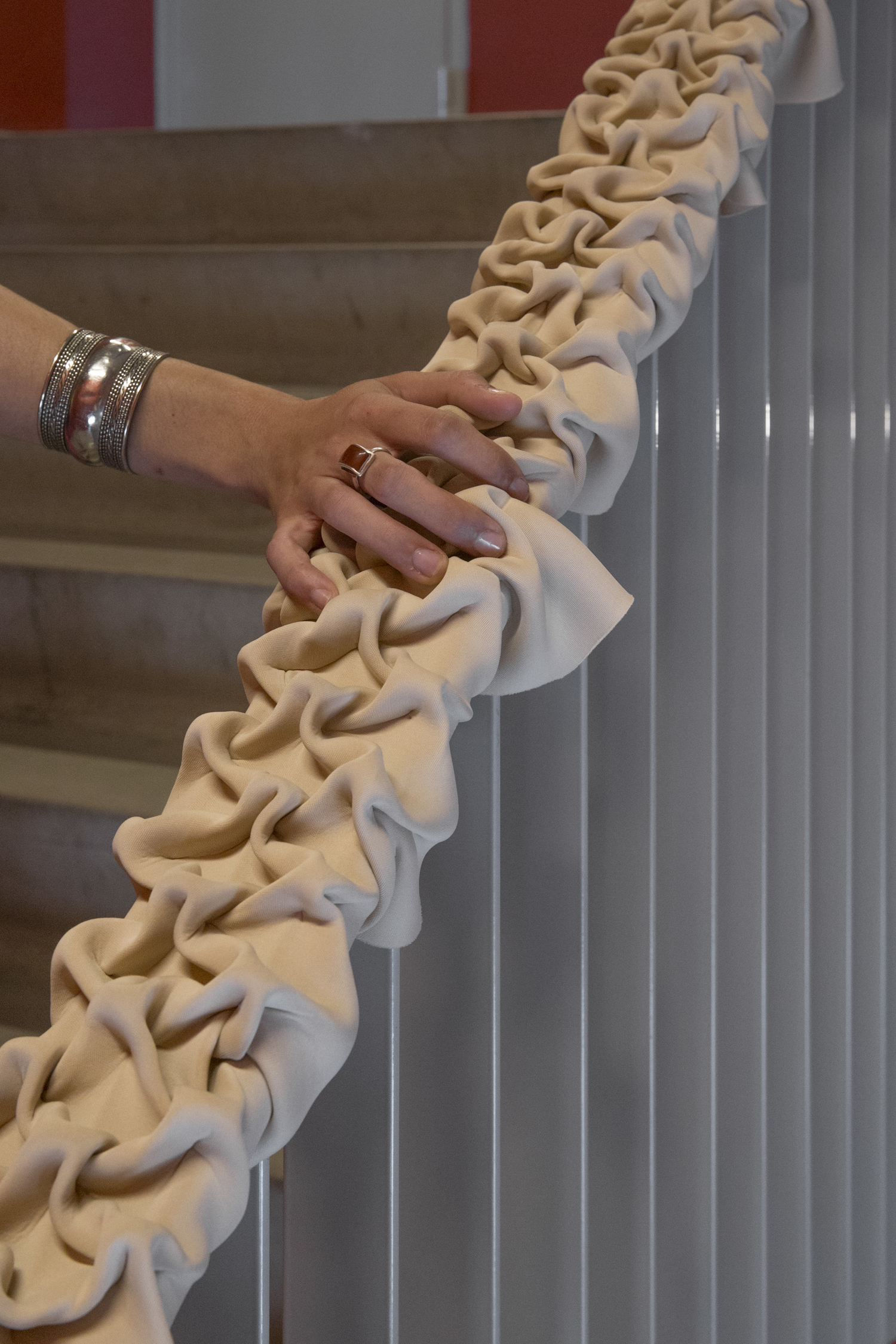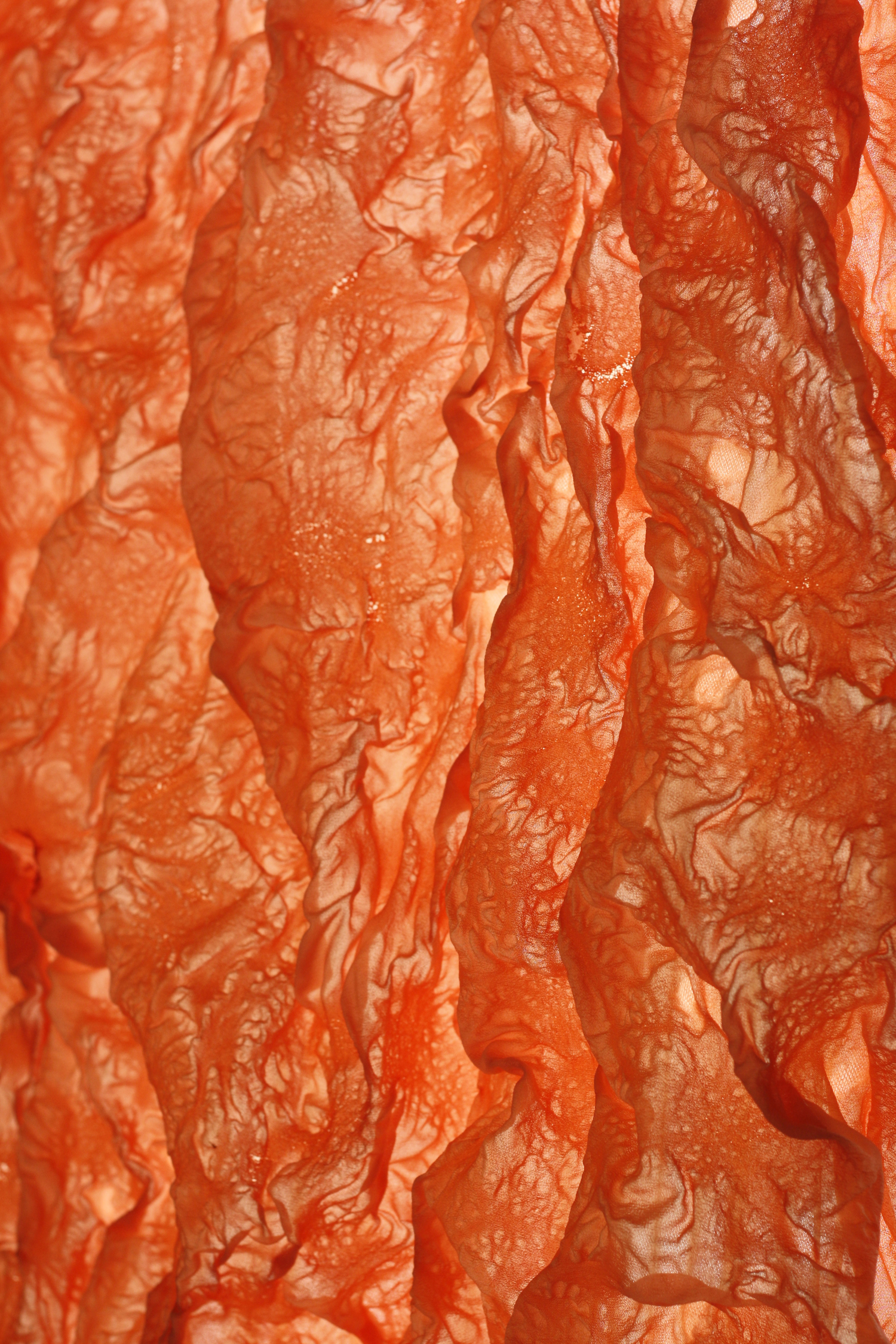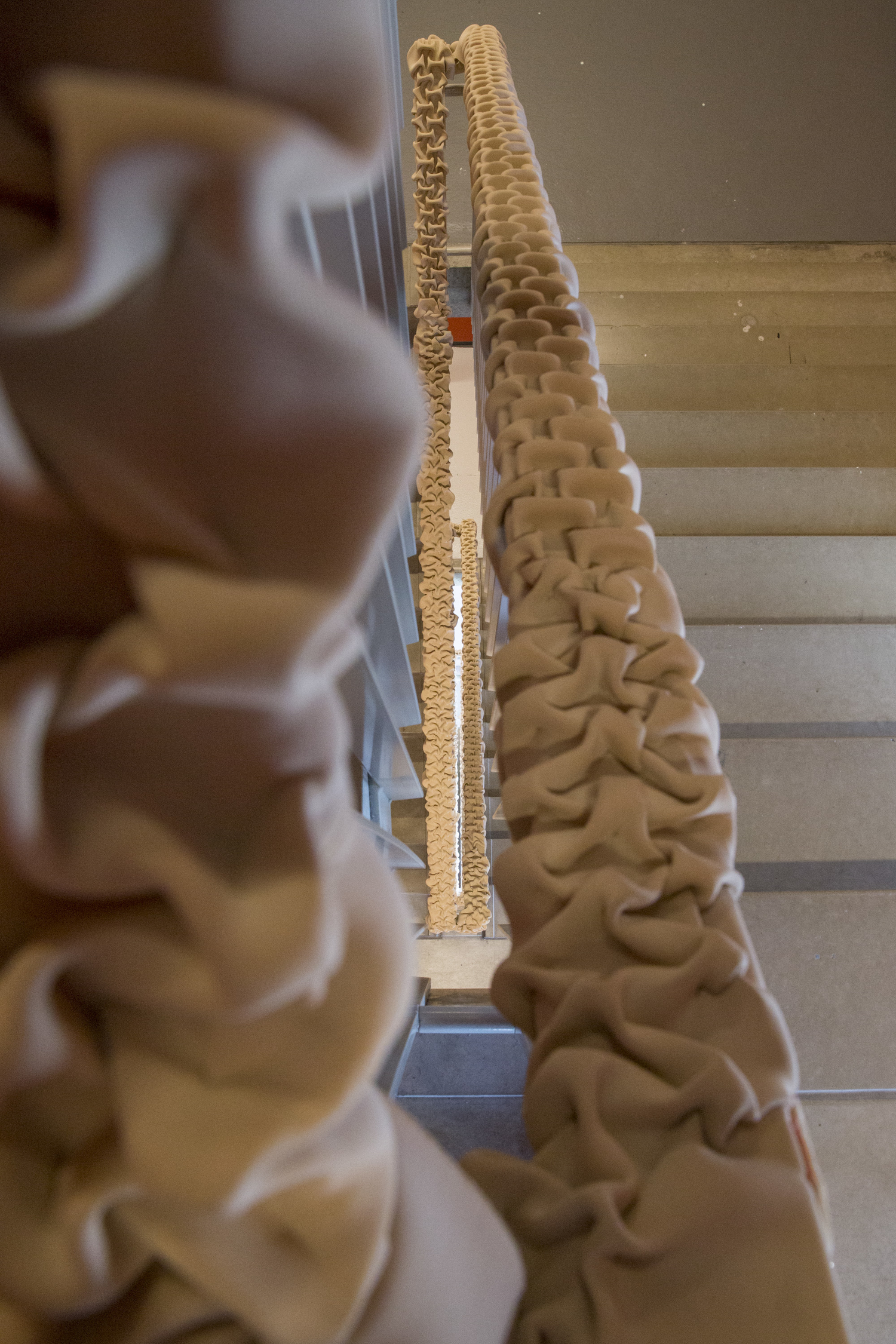
1991
margheritasoldati.com
Thesis: Joker
The Skin is an Extension of the Brain
A few years ago Margherita found herself obsessed by manipulating textile to create organic and repetitive shapes. When she applied them on pillows and simple objects for patients suffering from mental diseases (Alzheimer, Dementia), she was surprised to realise how they could benefit from being stimulated by textile patterns. Therefore she started wondering how she could integrate textile and tactile surfaces in our life: the natural next step was to embrace the flexibility and malleability of the material to imagine new possibilities to alter standard architectural elements.
“The effects of tactile stimulation on the structure of the brain can be appreciated by understanding that the skin is almost an extension of the brain, formed as it is from the same layer of tissue during the embryonic stage of life.”(Biosociology: An Emerging Paradigm, Anthony Walsh,1995).
Keeping this sentence in mind she explores the relation that connects textile structures with the physical and social space, by analyzing the boundaries between space, tactile perception and textile surfaces.
The interventions and the interactive environments that she creates aim to trigger a moment of genuine reaction of surprise and curiosity which involves a more active and aware use of our senses.
The investigation of alternative ways to infiltrate architecture with tactile textile surfaces keeps on raising new personal research points on how to cross-examine the blurring line between the traditional function of surfaces and more stimulating encounters with our daily surrounding.
